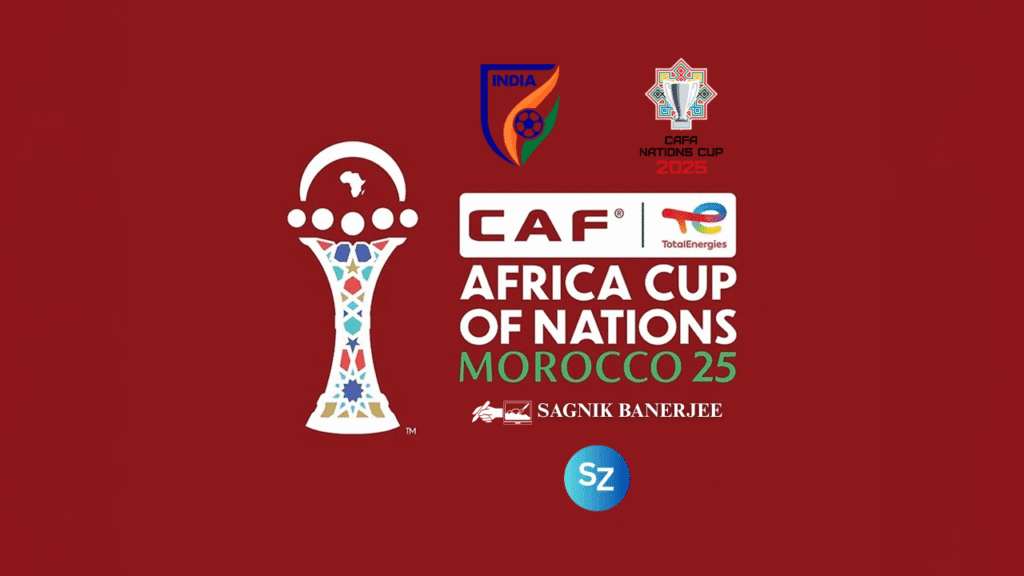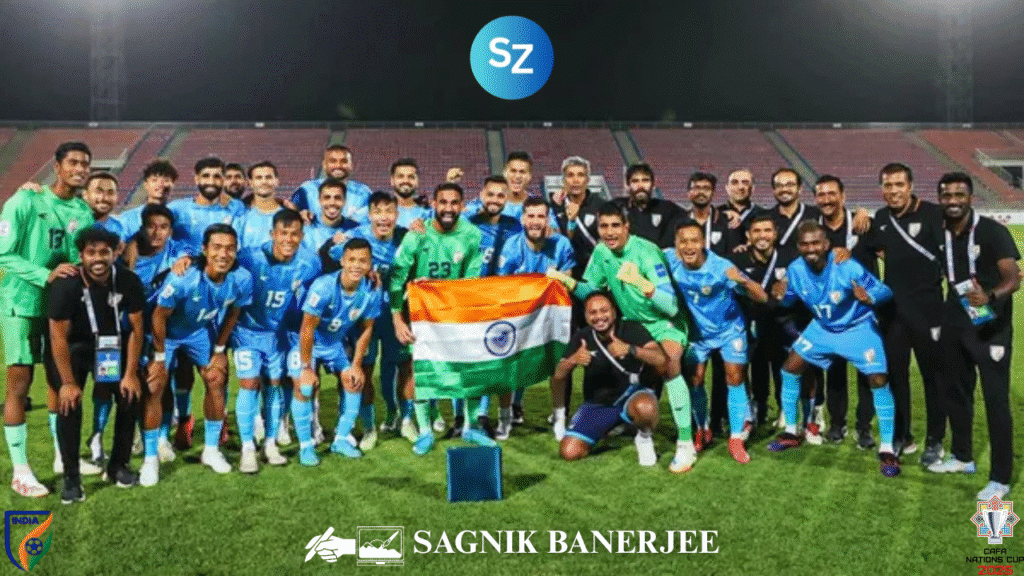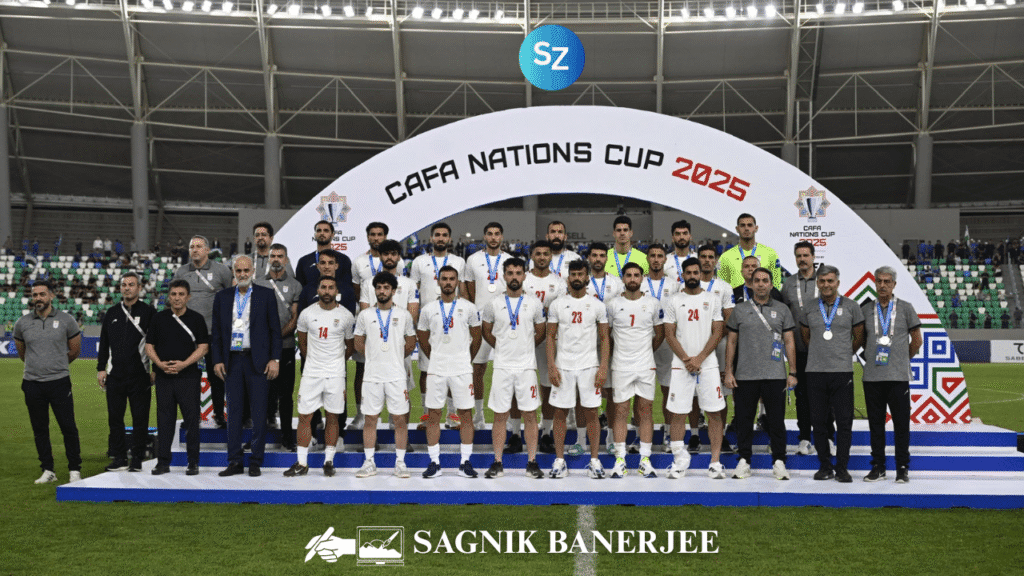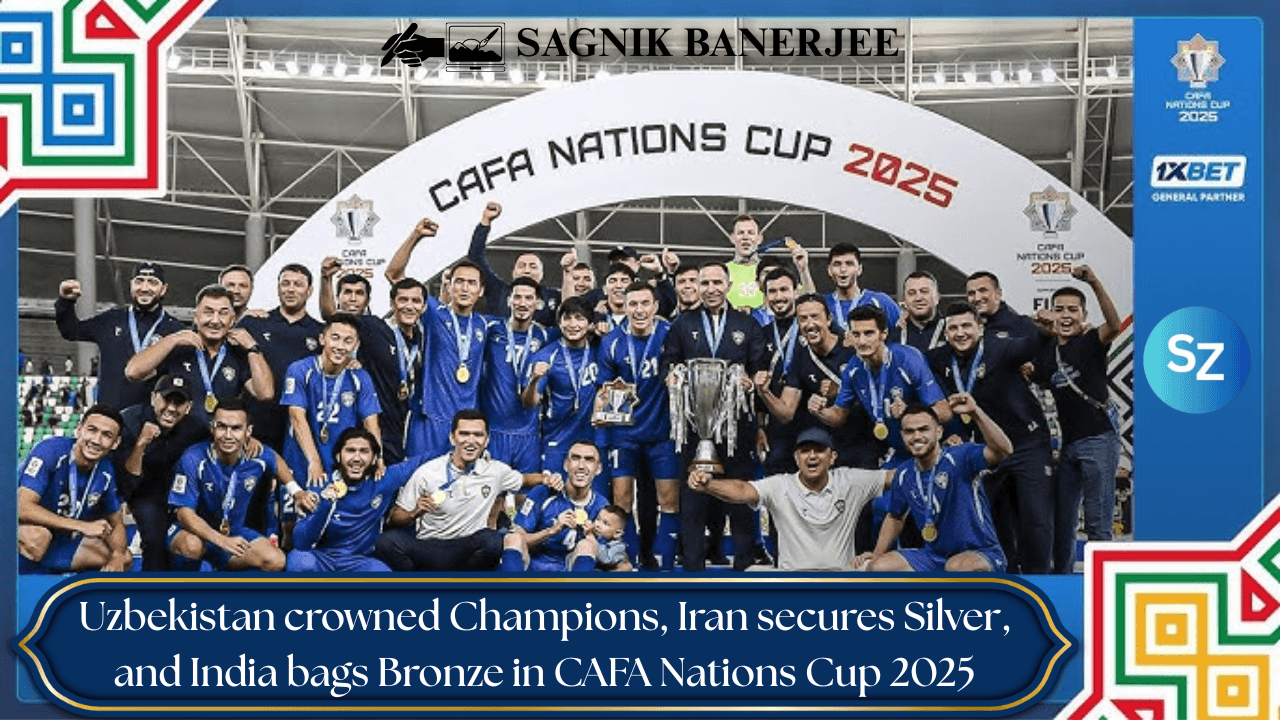The second edition of CAFA Nations Cup 2025, hosted between 29 August and 8 September 2025, was a landmark event in the lives of Central Asian football as it gave the upcoming teams an opportunity to express their talents as well as providing them with the essential international exposure.
The tournament was hosted by Tajikistan and Uzbekistan and saw the participation of eight national teams including: Uzbekistan, Iran, Tajikistan, Turkmenistan, Kyrgyzstan, Afghanistan, Oman and India. It was a significant stride in regional competition as well as towards those countries aiming at closing the divide with the elite footballing countries.
The tournament was also held in conjunction with the 10th anniversary of the Central Asian Football Association (CAFA) which was marking 10 years of regional cooperation in football development. In the beginning, Malaysia was going to be a part of it, but dropped out on 15 July 2025, citing logistical and player availability concerns.
India was called in as a substitute and with this invitation, Blue Tigers got the chance of playing on a great international platform. India was confirmed in the All-India Football Federation (AIFF) a few weeks to the start of the tournament, in late July.
The tournament was organized into two sets of four teams. The matches of the group stage were held in three stadiums: in Tajikistan, the Hisor Central Stadium (20,000 seats), in Uzbekistan, the Milliy Stadium and Pakhtakor Central Stadium (40,000 and 35,000 seats, respectively). The structure enabled any team to have three group games, then knockouts, where there would be semi-finals, third place playoff and final.
The tournament was not just about the medals, but it was an orienting ground towards the AFC Asian Cup 2027 qualifiers, which meant that the teams had to polish their strategies, experiment with player formations and enhance the dynamics of their squads. This was of special concern to India, which with newly appointed head coach, Khalid Jamil, took the tournament as an opportunity to experiment, learn and gaining confidence.
The final rankings were historic. Uzbekistan became the winner as they won the gold medal by beating Iran in the final by the slightest margin of 1-0 in extra time. The traditional Asian football powerhouse Iran took the silver, with India taking the bronze for the first time as they appeared on the podium in this event.
The third-place playoff victory over Oman was through a dramatic penalty shootout where goalkeeper Gurpreet Singh Sandhu saved the nation with vital saves.
The format of the tournament, intense rivalry, and equal groupings gave a combination of high stakes games and tactical encounters with a combination of experience and youthful vigor.
The incident cemented the role of regional collaboration and rivalry in improving the level of football among Central and South Asia. To India, it acted as a test run and a boost of confidence as it became the foundation of the future road.

Group Stage & Knockout Rounds: India’s Journey to the Bronze Medal
The tournament was inspirational to the Indian Football Team. India, ranked 127th in FIFA in April 2025, was placed in Group B with Tajikistan, Iran and Afghanistan, and was the lowest-ranked team in the group. Nevertheless, the Blue Tigers displayed perseverance, tactical discipline and stamina which left impressions not only on fans but also on analysts. India during the tenure of Khalid Jamil was not only adopted to a strategic, patient style of play and in the process, the focus was on possession-based play, quick passing, and disciplined defending.
Group Stage Matches
Match 1 – India vs Afghanistan (29 August, Hisor)
India’s campaign began on a high note, with a 1-0 win over Afghanistan. The match was a closely contested affair, with both teams probing for openings. The breakthrough came through a set-piece, where Udanta Singh capitalized on a loose ball inside the penalty area. India held on to their lead, showing composure and solid defending, securing crucial early points.
Match 2 – India vs Iran (1 September, Hisor)
Facing Iran, ranked 18th globally, proved to be a stern test. Iran’s superior experience, quick passing, and disciplined structure overwhelmed the Blue Tigers. Despite defending valiantly for long stretches, India succumbed to a 3-0 defeat. However, the team learned valuable lessons about pressing, defensive organization, and maintaining shape under pressure.
Match 3 – India vs Tajikistan (4 September, Hisor)
In their final group match, India staged a spirited comeback against Tajikistan. With a fast start and well-coordinated attacks, India scored twice, one through a long throw that led to a defensive error and another from a swift counterattack. Despite conceding a late goal, India’s 2-1 win secured their place in the semi-finals, marking an impressive recovery and demonstrating adaptability.
Knockout Stage
Semi-final – India vs Iran (6 September, Milliy Stadium)
India’s semi-final match was a tough outing. Iran’s tactical discipline and depth proved overwhelming, handing India a 4-1 defeat. Nevertheless, India’s lone goal, scored by Muhammed Uvais, highlighted the team’s spirit and attacking potential. The defeat provided insights that would later help India regroup for the third-place playoff.
Third-Place Playoff – India vs Oman (8 September, Hisor)
India’s finest hour arrived in the third-place match against Oman. After a hard-fought 1-1 draw, the match proceeded to penalties. In a nail-biting shootout, Gurpreet Singh Sandhu became the hero, saving the decisive penalty to hand India a 3-2 win. This victory secured the bronze medal and was celebrated as a landmark achievement in India’s football history.
Road to the Third Place
India’s performance throughout the tournament was built on collective effort, discipline, and strategic gameplay. While individual brilliance occasionally shone through, it was the team’s unity and resilience that defined their success.
Emerging from the group stage as underdogs, India displayed tactical maturity, mental toughness, and growth, qualities that will serve them well in the upcoming Asian Cup qualifiers and beyond.

Goal Scorers, Awards & Key Statistics
The 2025 CAFA Nations Cup was full of technical duels, group goals, and individual excellence and a few players proved their worth to the team. At the end of the tournament, prizes of excellence in performance, fair play, and goalkeeping were awarded, which also showed how all the involved nations showed the competitive spirit and professional conduct.
Top Goal Scorers
The tournament’s Top Goalscorer was Igor Sergeev of Uzbekistan, who scored 3 goals across the group and knockout stages. His combination of intelligent positioning and clinical finishing made him a nightmare for defenders. Sergeev’s ability to time his runs and exploit space in the box was a decisive factor in Uzbekistan’s title run.
In second place among goal scorers was Khojiakbar Alijonov, also from Uzbekistan, who scored 2 crucial goals, including the match-winner in the final against Iran. His composed play under pressure earned him the Best Player of the Tournament award.
For India, Udanta Singh and Muhammed Uvais emerged as key contributors. Udanta’s composure in front of goal against Afghanistan and his leadership in the third-place playoff showcased his experience and versatility. Meanwhile, Uvais’s long throws created multiple scoring opportunities and helped turn possession into attack, especially in the knockout rounds.
Iran’s Payam Niazmand, despite conceding goals in multiple games, earned the Best Goalkeeper award for his reflex saves and command of the defensive third. His performances against teams like Uzbekistan and India were noteworthy, illustrating resilience in high-pressure situations.
Other Awards
- Fair Play Award: Tajikistan received the Fair Play Award for their disciplined and respectful play throughout the tournament.
- Best Emerging Player: This accolade went to India’s Muhammed Uvais, whose long throws and energetic midfield presence were a revelation and a testament to India’s scouting and player development system.
Goal Analysis
Scoring in this tournament took place through various events such as set pieces, counterattacks as well as defensive lapses. Uzbekistan took advantage of rapid changes whereas Iran employed more possession-oriented tactics, keeping the ball in the middle of the field and finding loopholes on the defense. India, however, paid attention to organized defense, fast counter attacks and long passes that disorganized the defensive lines of the opponents.
Statistics at a Glance
- Total Goals Scored: 36
- Matches Played: 14
- Average Goals per Match: 2.57
- Most Clean Sheets: Uzbekistan (4 matches)
- Most Fouls Conceded: Afghanistan
- Penalty Shootouts: 1 (India vs Oman third-place playoff)
India’s tally of 4 goals across five matches was a modest but encouraging return, especially given their status as tournament newcomers. The defensive structure, combined with set-piece ingenuity, allowed them to stay competitive even against higher-ranked teams.
Takeaways
The CAFA Nations Cup emphasised not only the superiority of Uzbekistan, but also the consistency of Iran and the rapid development of India with a new coach. It was also a testing ground for upcoming players in the tournament, as there was a mixture of experienced players and potential stars performing in an unforgettable manner.
All these personal and group performances established the theme of what India hopes to become in continental championships and the experiences of both victory and failure are lessons they can apply to their future efforts.

India’s Road Ahead: Preparation for the AFC Asian Cup 2027
India’s performance in the CAFA Nations Cup 2025, culminating in a historic bronze medal, is more than a celebratory achievement, it is a steppingstone toward larger continental ambitions. With AFC Asian Cup 2027 qualifiers looming, India’s focus is now on translating the momentum from the tournament into sustained performance on a bigger stage.
Upcoming Fixtures
India’s next major challenge is the qualification process for the AFC Asian Cup 2027, which will test their tactical maturity, fitness levels, and squad depth. The qualifiers are scheduled as follows:
- 9 October 2025: India vs Singapore (Home)
- 14 October 2025: Singapore vs India (Away)
- 18 November 2025: Bangladesh vs India (Away)
- 31 March 2026: India vs Hong Kong (Home)
These fixtures present a balanced mix of home-and-away encounters, each requiring different approaches; home matches demand attacking intent and controlling possession, while away games necessitate disciplined defending and counterattacking efficiency.
The CAFA Experience
The CAFA Nations Cup provided India with the insights in their tactical and psychological preparedness. Following the philosophy of collective resilience and positional discipline as spread by Coach Khalid Jamil is likely to be transferred into the qualifiers. The use of long throws, set pieces and organised defense that served so well against the Central Asian opposition may be modified to plan matches against the technically skilled players such as Singapore and Hong Kong.
Squad Development
One of the important results of the tournament is the exposure given to the younger players such as Muhammed Uvais and Udanta Singh. As the old warhorses took a back seat, the bench strength of India was put to test and new leaders were born. This should be encouraging to the long-term squad planning as the AIFF will be able to invest in youth development without losing the experience of the players as mentors.
Also, the tournament provided the opportunity to experiment with midfield and defense combinations. The tactical experiments that Jamil tries, like using long throws to attack, will probably be improved using CAFA knowledge.
Challenges Ahead
The way to the Asian glory will not be smooth though. India needs to work on such aspects as management of fitness, sustaining squad harmony and dealing with in-game transitions when pressure mounts. Those who oppose such as Singapore, Bangladesh and Hong Kong will analyse performances of CAFA of India and seek to take advantage of any defensive weaknesses or over-use of the set pieces.
It will also be important to keep the consistency of attack patterns and improve the goal conversion rates. India performed reasonably in terms of shot accuracy and the creation of chances in the CAFA tournament, but the performances should be refined when playing the higher-ranked teams.
Optimism and Realism

The CAFA Nations Cup bronze medal has provided faith to the players, fans, and even to the administration. It is not only a victory, but also a new initiative towards a strong and competitive national team. The leadership of Jamil along with tactical discipline and youth development provides India with an effective way of becoming a formidable figure in Asia.
With less than a month to the qualifiers, India will have the difficulty of keeping a balance between the lessons of the Central Asia and the initiative of the tactics and ensuring that each game counts towards continental recognition and development.

